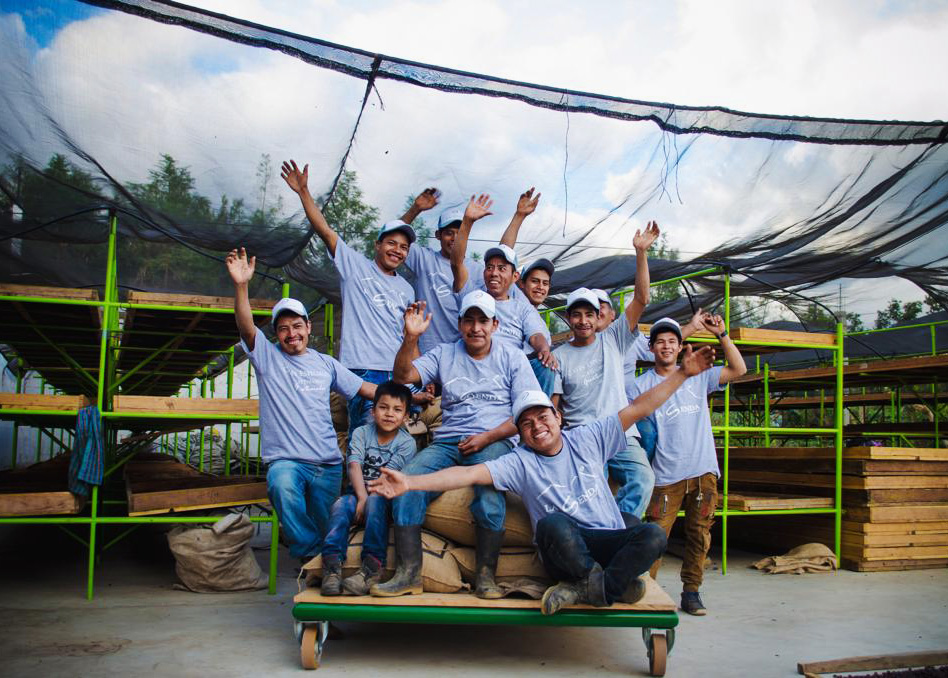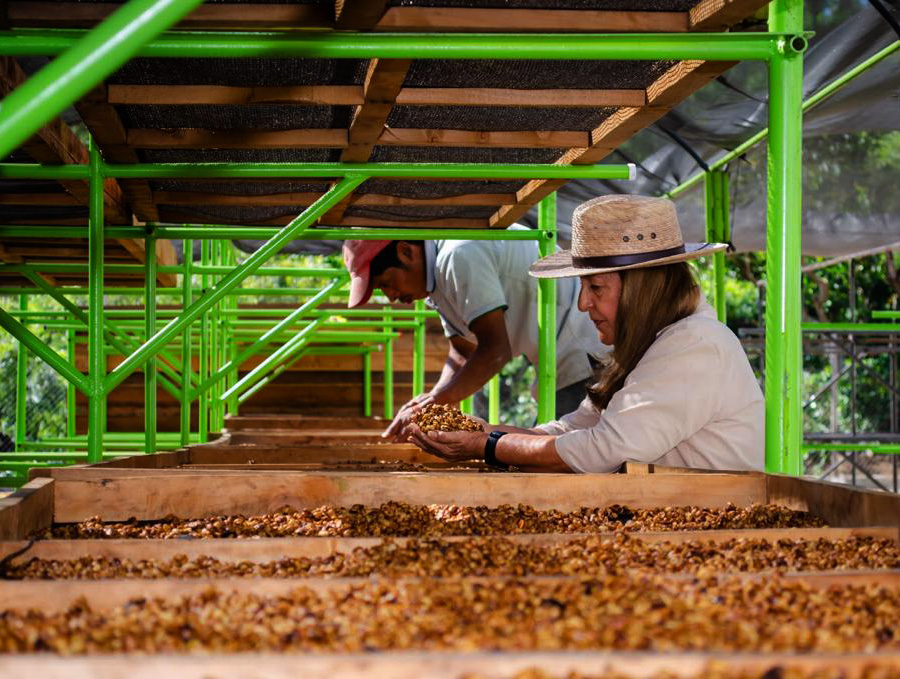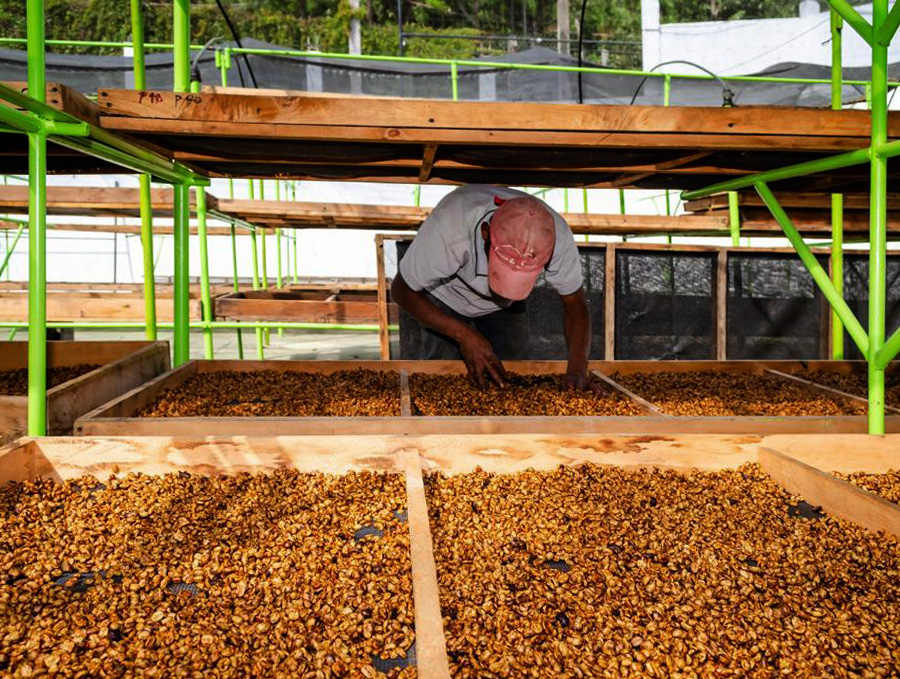One example of a producer in Guatemala that has found success in experimenting with processing methods is Finca La Senda, a small family farm in Acatenango. The owners, Arnoldo and Maria Eugenia Pérez, used to sell their cherry to nearby cooperatives, but they began to do their own processing on the farm four years ago. In that time, they’ve conducted hundreds of processing experiments and developed a distinctive processing style. We spoke with Yancy Pérez, the owners’ daughter, and her husband Paolo to find out more about their family’s journey.
 Relaxing at Finca La Senda, a family-run farm. Image courtesy of Finca La Senda.
Relaxing at Finca La Senda, a family-run farm. Image courtesy of Finca La Senda.
‘Yancy’s grandfather started farming coffee there 60 years ago. It was a traditional farm, picking the cherries and then selling them to the local cooperatives,’ Paolo says.
The family decided to try processing on site to make the farm more profitable, in order to allow Yancy’s parents to retire, he explains. ‘At the cooperatives, there is zero premium for quality, and the cherries are all being mixed together. We knew there were good cherries on the tree, so we came up with the idea that if the terroir is right and the plants are being taken care of, why don’t we try to export directly? Of course, the business plan looked much cheaper than the reality!’
Honey process coffees drying on raised beds. The owners of Finca La Senda have optimised the process from picking to drying, by carrying out hundreds of experiments. Image courtesy of Finca La Senda.
In this video, we look at how Finca La Senda uses raised beds to dry their coffee
They built a conventional wet mill on the farm but began experimenting immediately, with the help of a consultant, Thomas Pingen. ‘In the first year, we did 120 microlots alongside our main lots to try out different processes,’ Paolo says.

